Small Sample Signal Modulation Recognition Algorithm Based on Support Vector Machine Enhanced by Generative Adversarial Networks Generated Data
-
摘要: 着眼于解决小样本信号调制识别问题,该文首先研究了利用支持向量机(SVM)进行分类识别的理论可行性;其次根据统计学习理论,对利用生成对抗网络(GAN)生成数据增强支持向量机分类识别能力进行了理论分析;最后通过构建包含层归一化的深度卷积生成对抗网络(LDCGAN),与普通深度卷积生成对抗网络相比,其生成数据映射至高维空间后特征更加明显,更有利于支持向量机的分类,实验验证了该生成对抗网络生成数据可以在小样本条件下实现对支持向量机分类识别能力的有效增强。Abstract: Focusing on solving the problem of small sample signal modulation recognition, the theoretical feasibility of using Support Vector Machine (SVM) for modulation recognition is investigated firstly; Secondly, based on statistical learning theory, a theoretical analysis of using Generative Adversarial Networks (GAN) generated data to enhance the classification ability of SVM is conducted; And finally, a Deep Convolutional Generative Adversarial Network based on Layer normalization (LDCGAN) is constructed , whose generated data has more obvious features than Deep Convolutional Generative Adversarial Networks (DCGAN) after mapping to a high-dimensional space, so the generated data is more conducive to the classification of SVM. The experiments verify that LDGAN generated data can achieve an effective enhancement of the classification ability of SVM under the condition of small samples.
-
表 1 LDCGAN整体网络结构
生成网络 鉴别网络 输入 输出维度 输入 输出维度 Noise = Input(shape=(100,)) [(None,100)] Input(shape=(1024,1,1)) [(None,1024,2,1)] Dense(256×2×128,activation='relu') (None,65536) Con2D(16,(2,2),padding='same',strides=2),
LeakyReLU(alpha=0.2)(None,512,1,16) Reshape((256,2,128)) (None,256,2,128) LayerNormalization (None,512,1,16) UpSampling2D((2,1)) (None,512,2,128) Con2D(32,(2,1),padding='same',strides=(2,1)),
LeakyReLU(alpha=0.2)(None,256,1,32) Conv2D(128,(2,1),strides=1,padding='same',
activation='relu')(None,512,2,128) LayerNormalization (None,256,1,32) BatchNormalization (None,512,2,128) ZeroPadding2D(padding=((1,1),(1,1))) (None,258,3,32) UpSampling2D((2,1)) (None,1024,2,128) Con2D(64,(2,2),padding='valid',strides=1),
LeakyReLU(alpha=0.2)(None,257,2,64) Conv2D(64,(2,1),strides=1,padding='same',
activation='relu')(None,1024,2,64) LayerNormalization (None,257,2,64) BatchNormalization (None,1024,2,64) Con2D(128,(2,2),padding='same',strides=2),
LeakyReLU(alpha=0.2)(None,129,1,128) Conv2D(32,(2,1),strides=1,padding='same',
activation='relu')(None,1024,2,32) LayerNormalization (None,129,1,128) BatchNormalization (None,1024,2,32) Con2D(256,(2,1),padding='same',strides=1),
LeakyReLU(alpha=0.2)(None,129,1,256) Conv2D(1,(2,1),strides=1,padding='same',
activation='tanh')(None,1024,2,1) GlobalAveragePooling2D() (None,256) Dense(1) (None,1) 表 2 传统机器学习算法训练耗时(s)
SVM KNN MLP Random
ForestLightGBM GBDT XGBoost AdaBoost 耗时 1.8 0.1 2.5 0.3 11.0 188.0 7.0 9.0 表 3 LDCGAN训练耗时(h)
训练epoch 10000 20000 25000 30000 40000 60000 80000 耗时 0.6 1.2 1.5 1.8 2.4 3.6 4.8 -
[1] 丁世飞, 齐丙娟, 谭红艳. 支持向量机理论与算法研究综述[J]. 电子科技大学学报, 2011, 40(1): 2–10. doi: 10.3969/j.issn.1001-0548.2011.01.001DING Shifei, QI Bingjuan, and TAN Hongyan. An overview on theory and algorithm of support vector machines[J]. Journal of University of Electronic Science and Technology of China, 2011, 40(1): 2–10. doi: 10.3969/j.issn.1001-0548.2011.01.001 [2] BOUTTE D and SANTHANAM B. ISI effects in a hybrid ICA-SVM modulation recognition algorithm[C]. 2008 42nd Asilomar Conference on Signals, Systems and Computers, Pacific Grove, USA, 2008: 457–460. [3] VAPNIK V N. The Nature of Statistical Learning Theory[M]. New York: Springer, 1995. [4] 张学工. 关于统计学习理论与支持向量机[J]. 自动化学报, 2000, 26(1): 32–42. doi: 10.16383/j.aas.2000.01.005ZHANG Xuegong. Introduction to statistical learning theory and support vector machines[J]. Acta Automatica Sinica, 2000, 26(1): 32–42. doi: 10.16383/j.aas.2000.01.005 [5] REN Mingqiu, CAI Jinyan, ZHU Yuanqing, et al. Radar emitter signal classification based on mutual information and fuzzy support vector machines[C]. 2008 9th International Conference on Signal Processing, Beijing, China, 2008: 1641–1646. [6] LIN Chunfu and WANG Shengde. Fuzzy support vector machines[J]. IEEE Transactions on Neural Networks, 2002, 13(2): 464–471. doi: 10.1109/72.991432 [7] SUN Xiaoyong, SU Shaojing, HUANG Zhiping, et al. Blind modulation format identification using decision tree twin support vector machine in optical communication system[J]. Optics Communications, 2019, 438: 67–77. doi: 10.1016/j.optcom.2019.01.025 [8] JAYADEVA, KHEMCHANDANI R, and CHANDRA S. Twin support vector machines for pattern classification[J]. IEEE Transactions on Pattern Analysis and Machine Intelligence, 2007, 29(5): 905–910. doi: 10.1109/TPAMI.2007.1068 [9] QIAN Chen, ZENG Zhixin, and WANG Hua. Study on the impacts of feature indexes on intelligent identification of communication modulation mode[C]. 2021 6th International Symposium on Computer and Information Processing Technology (ISCIPT), Changsha, China, 2021: 325–332. [10] XIONG Wei, ZHANG Lin, MCNEIL M, et al. SYMMeTRy: Exploiting MIMO self-similarity for under-determined modulation recognition[J]. IEEE Transactions on Mobile Computing, 2022, 21(11): 4111–4124. doi: 10.1109/TMC.2021.3065891 [11] LI Shitong, QUAN Daying, WANG Xiaofeng, et al. LPI Radar signal modulation recognition with feature fusion based on time- frequency transforms[C]. 2021 13th International Conference on Wireless Communications and Signal Processing (WCSP), Changsha, China, 2021: 1–6. [12] LIU Gaohui and CAO Jiakun. Research on modulation recognition of OFDM signal based on hierarchical iterative support vector machine[C]. 2020 International Conference on Communications, Information System and Computer Engineering (CISCE), Kuala Lumpur, Malaysia, 2020: 38–44. [13] DONG Shuli, LI Zhipeng, and ZHAO Linfeng. A modulation recognition algorithm based on cyclic spectrum and SVM classification[C]. 2020 IEEE 4th Information Technology, Networking, Electronic and Automation Control Conference (ITNEC), Chongqing, China, 2020: 2123–2127. [14] HOSSEINZADEH H, EINALOU Z, and RAZZAZI F. A weakly supervised representation learning for modulation recognition of short duration signals[J]. Measurement, 2021, 178: 109346. doi: 10.1016/j.measurement.2021.109346 [15] FU Ying and WANG Xing. Radar signal recognition based on modified semi-supervised SVM algorithm[C]. 2017 IEEE 2nd Advanced Information Technology, Electronic and Automation Control Conference, Chongqing, China, 2017: 2336−2340. [16] GOODFELLOW I J, POUGET-ABADIE J, MIRZA M, et al. Generative adversarial nets[C]. Proceedings of the 27th International Conference on Neural Information Processing Systems, Montreal, Canada, 2014: 2672−2680. [17] RATLIFF L J, BURDEN S A, and SASTRY S S. Characterization and computation of local Nash equilibria in continuous games[C]. 2013 51st Annual Allerton Conference on Communication, Control, and Computing, Monticello, USA, 2013: 917–924. [18] 王坤峰, 苟超, 段艳杰, 等. 生成式对抗网络GAN的研究进展与展望[J]. 自动化学报, 2017, 43(3): 321–332. doi: 10.16383/j.aas.2017.y000003WANG Kunfeng, GOU Chao, DUAN Yanjie, et al. Generative adversarial networks: The state of the art and beyond[J]. Acta Automatica Sinica, 2017, 43(3): 321–332. doi: 10.16383/j.aas.2017.y000003 [19] RADFORD A, METZ L, and CHINTALA S. Unsupervised representation learning with deep convolutional generative adversarial networks[C]. 4th International Conference on Learning Representations, San Juan, Puerto Rico, 2016. [20] ARJOVSKY M, CHINTALA S, and BOTTOU L. Wasserstein GAN[J]. arXiv: 1701.07875, 2017. [21] SZEGEDY C, LIU Wei, JIA Yangqing, et al. Going deeper with convolutions[C]. 2015 IEEE Conference on Computer Vision and Pattern Recognition, Boston, USA, 2015: 1–9. [22] KHODJA H A and BOUDJENIBA O. Application of WGAN-GP in recommendation and Questioning the relevance of GAN-based approaches[J]. arXiv: 2204.12527, 2022. [23] LIU Fenglin, REN Xuancheng, ZHANG Zhiyuan, et al. Rethinking skip connection with layer normalization in transformers and resNets[J]. arXiv: 2105.07205, 2021. [24] DeepSig. DATASET: RADIOML 2018.01A (NEW)[EB/OL]. https://www.deepsig.ai/datasets, 2021. [25] FRIEDMAN J H. Greedy function approximation: A gradient boosting machine[J]. The Annals of Statistics, 2001, 29(5): 1189–1232. doi: 10.1214/aos/1013203451 -






 下载:
下载:
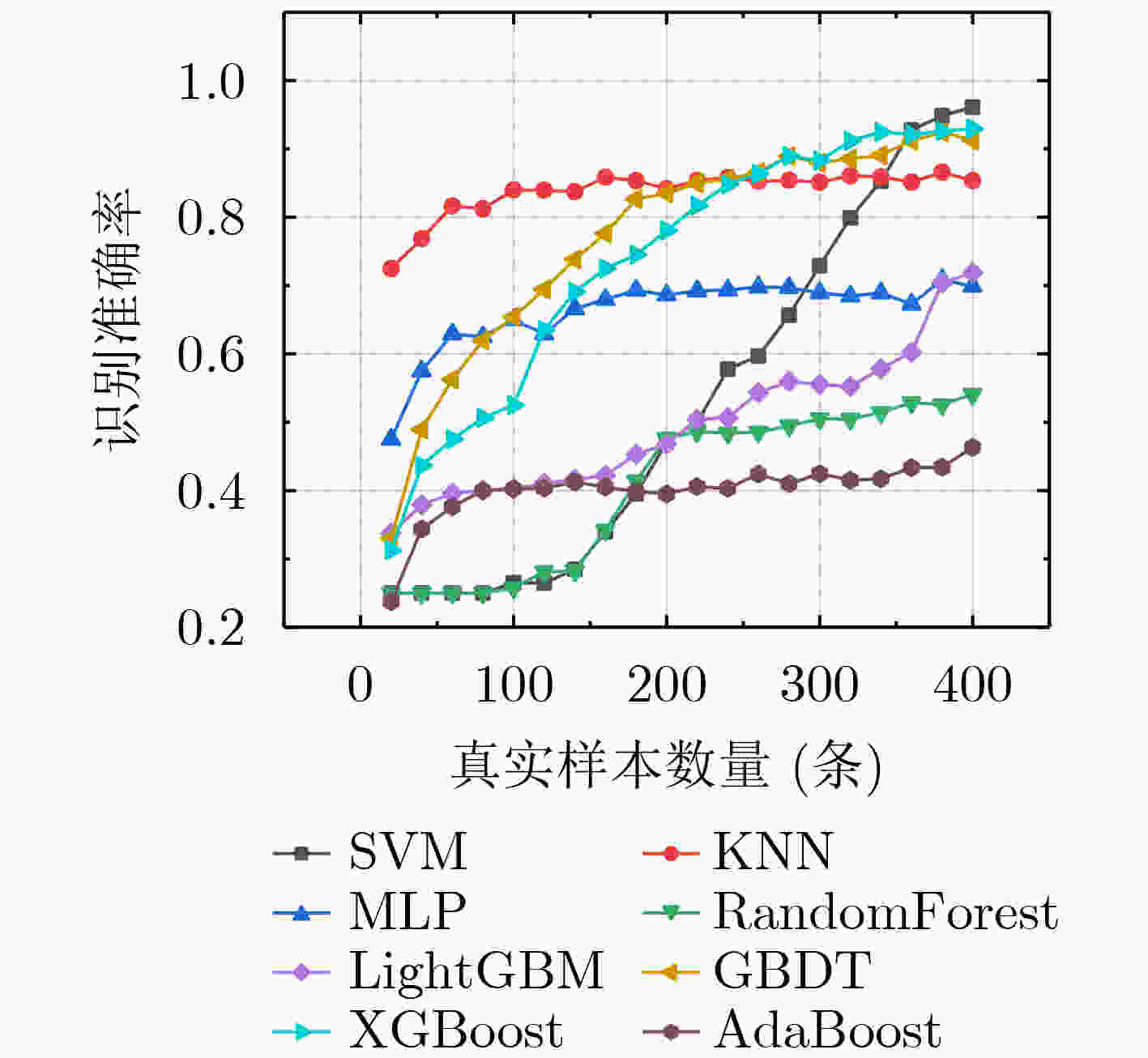


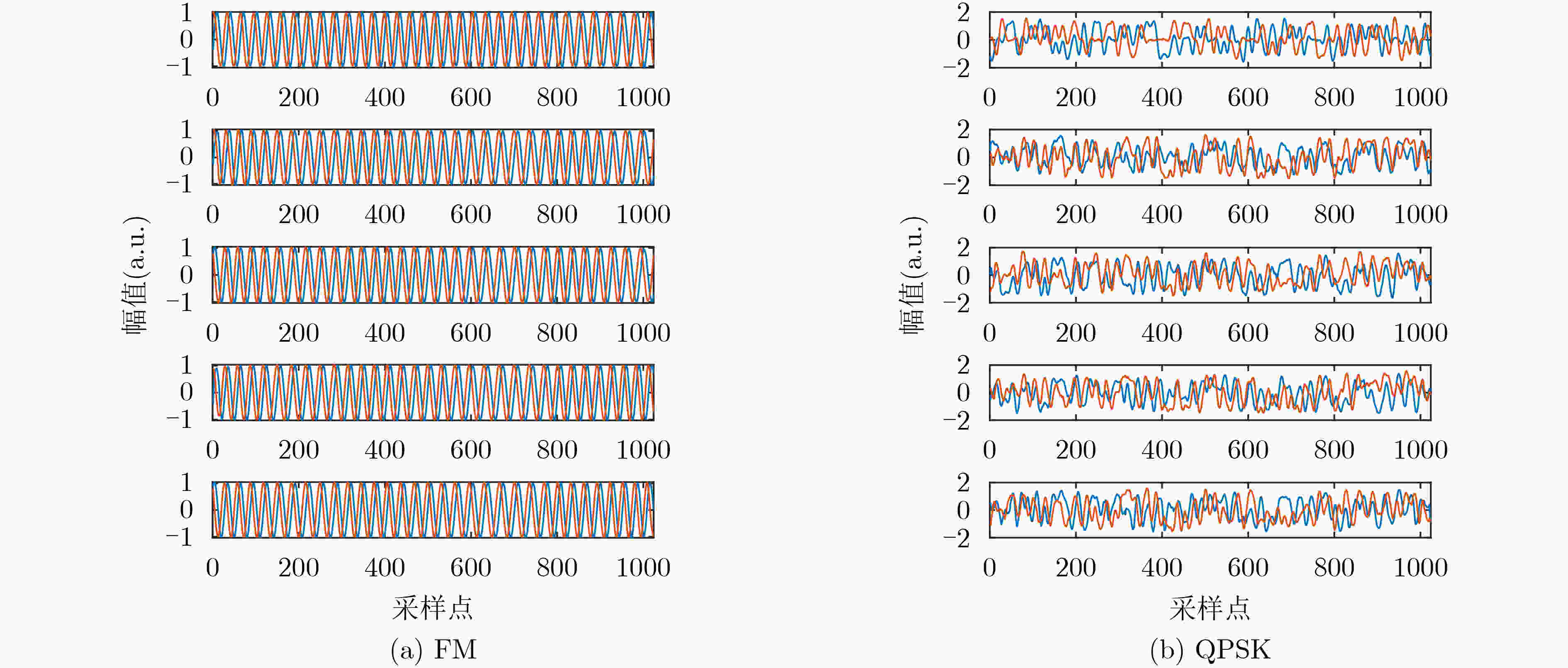
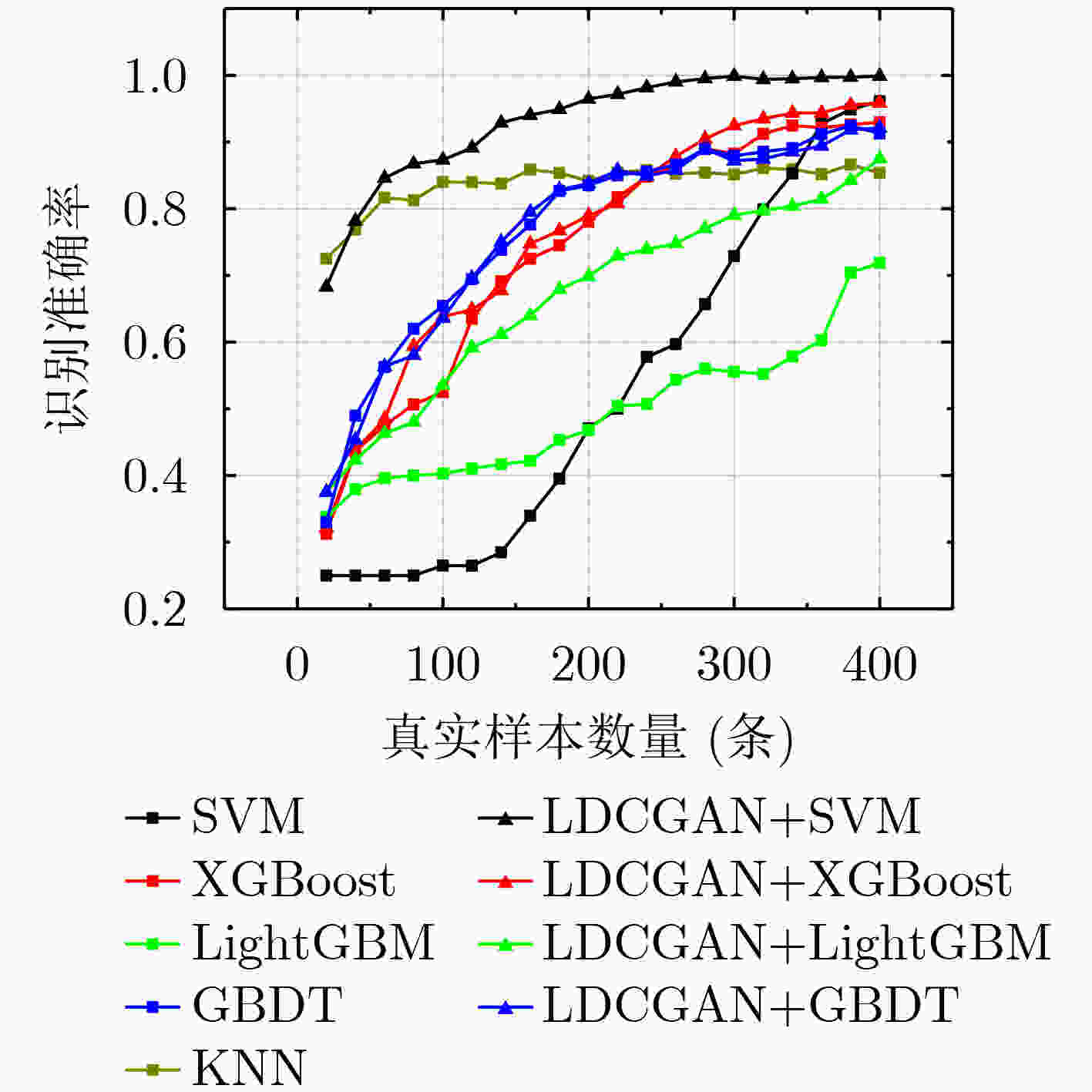
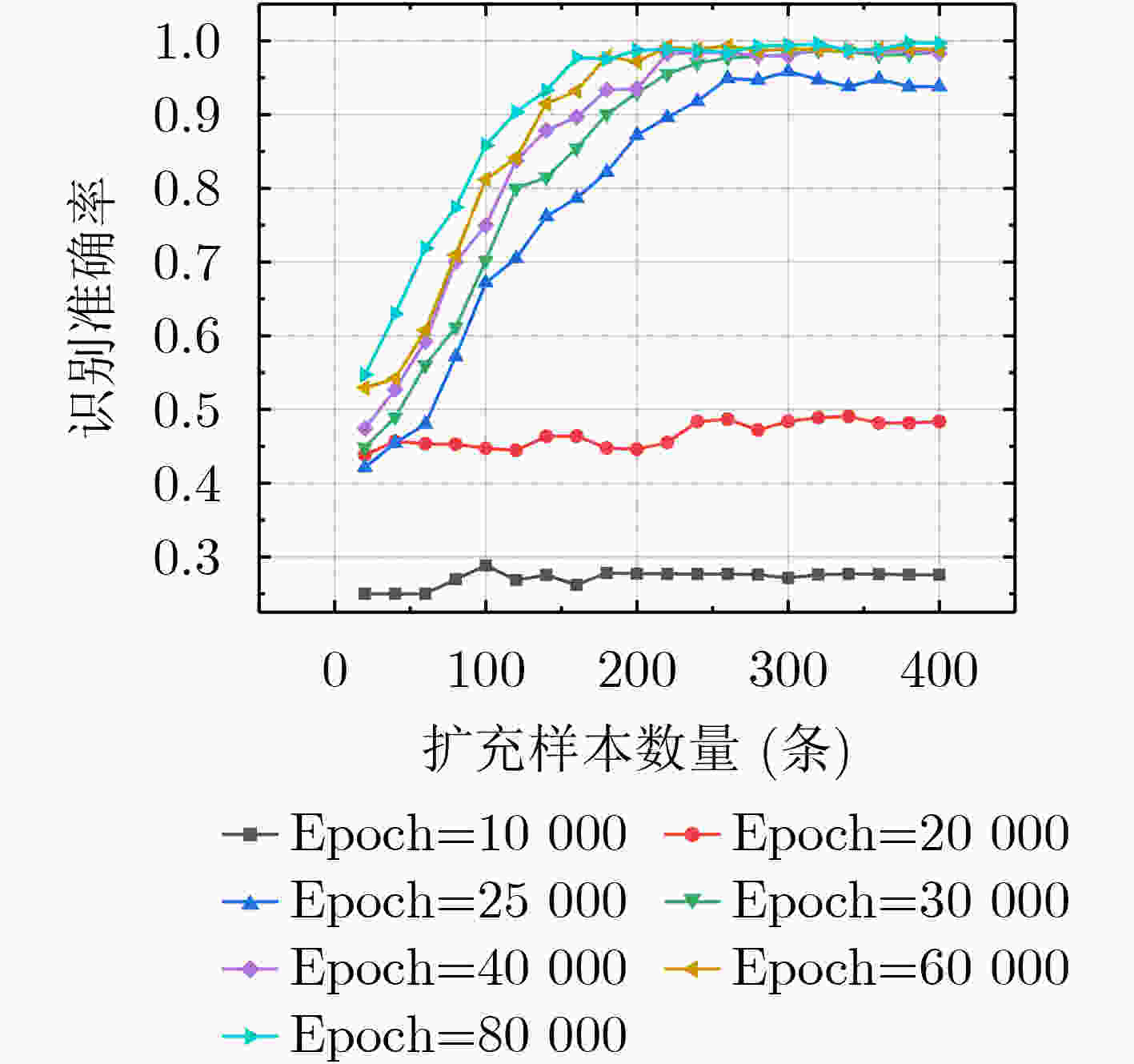
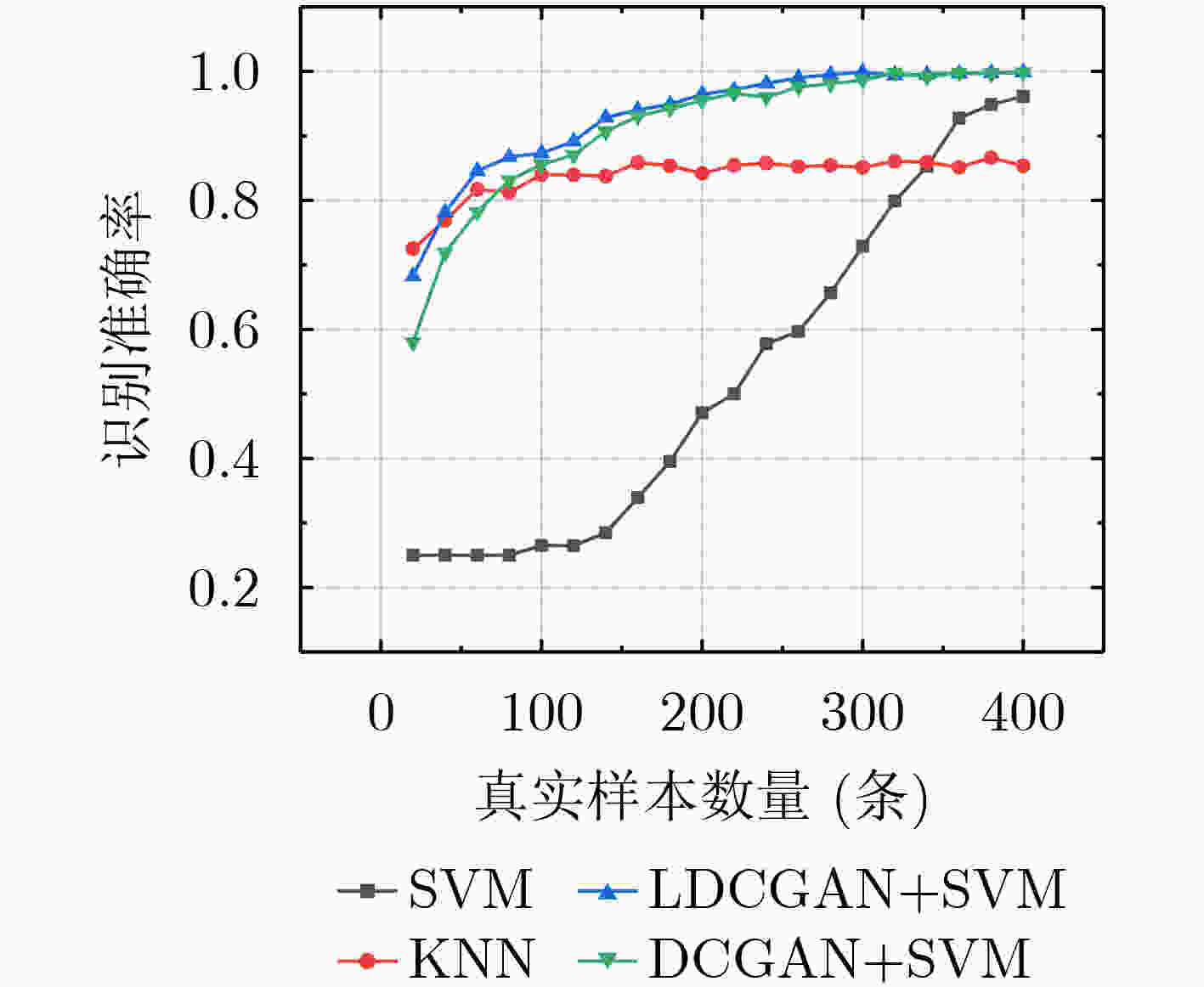
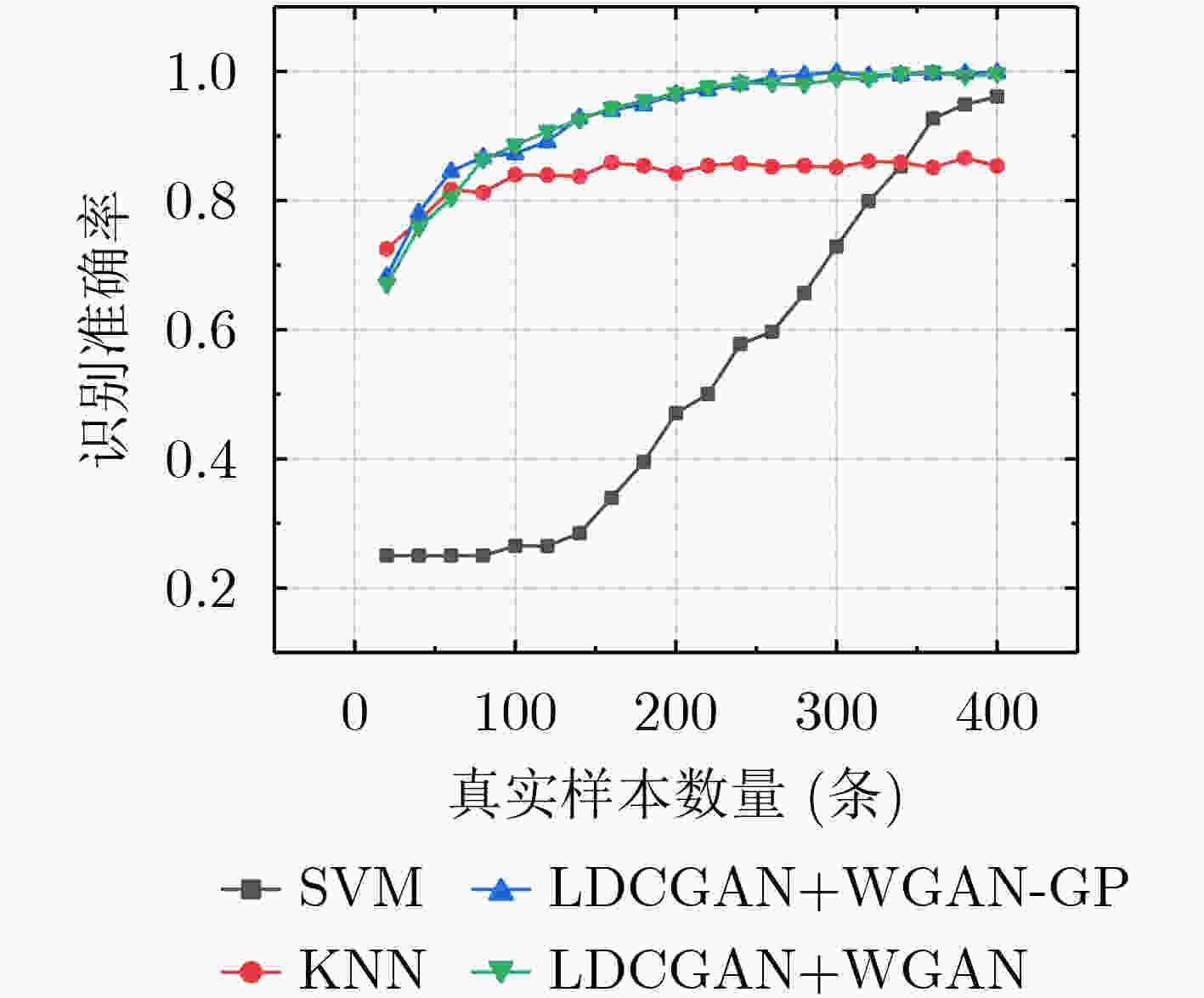
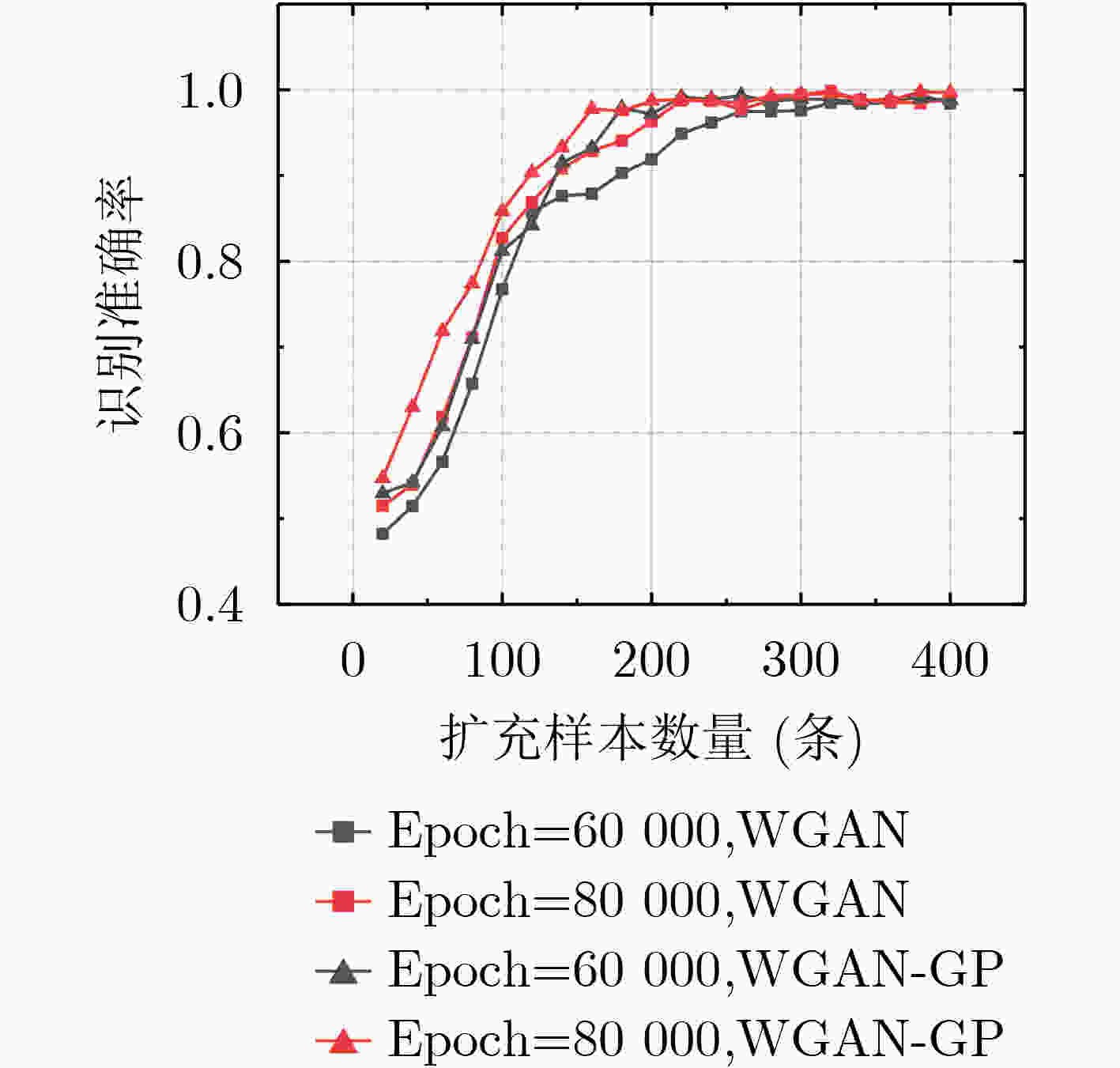
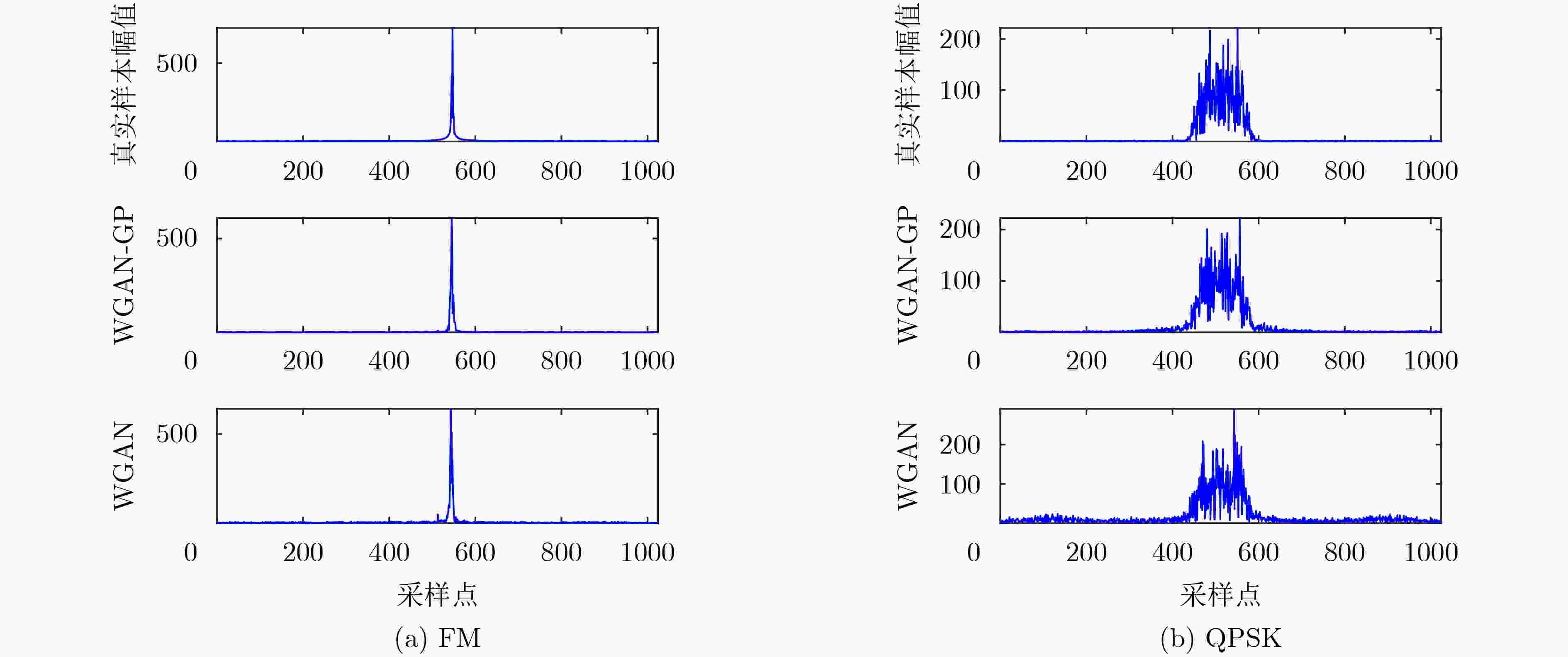
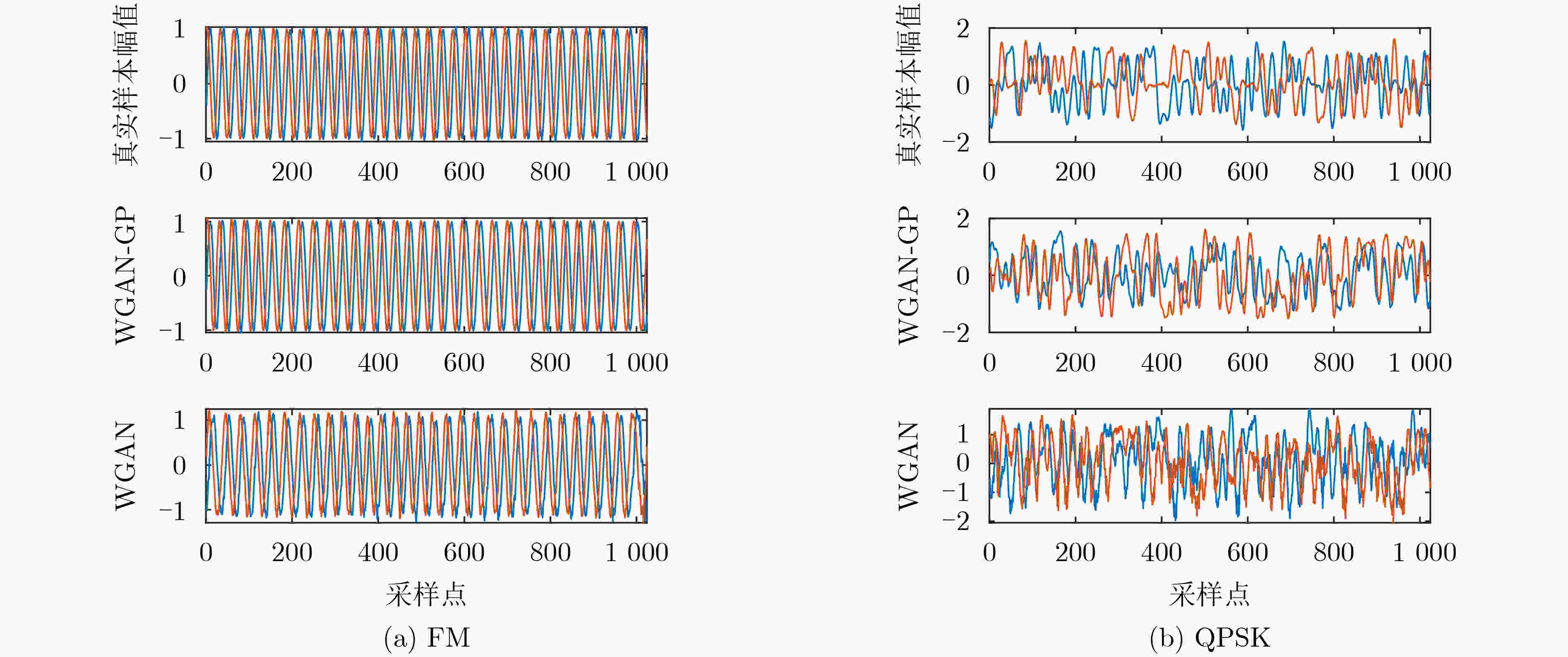


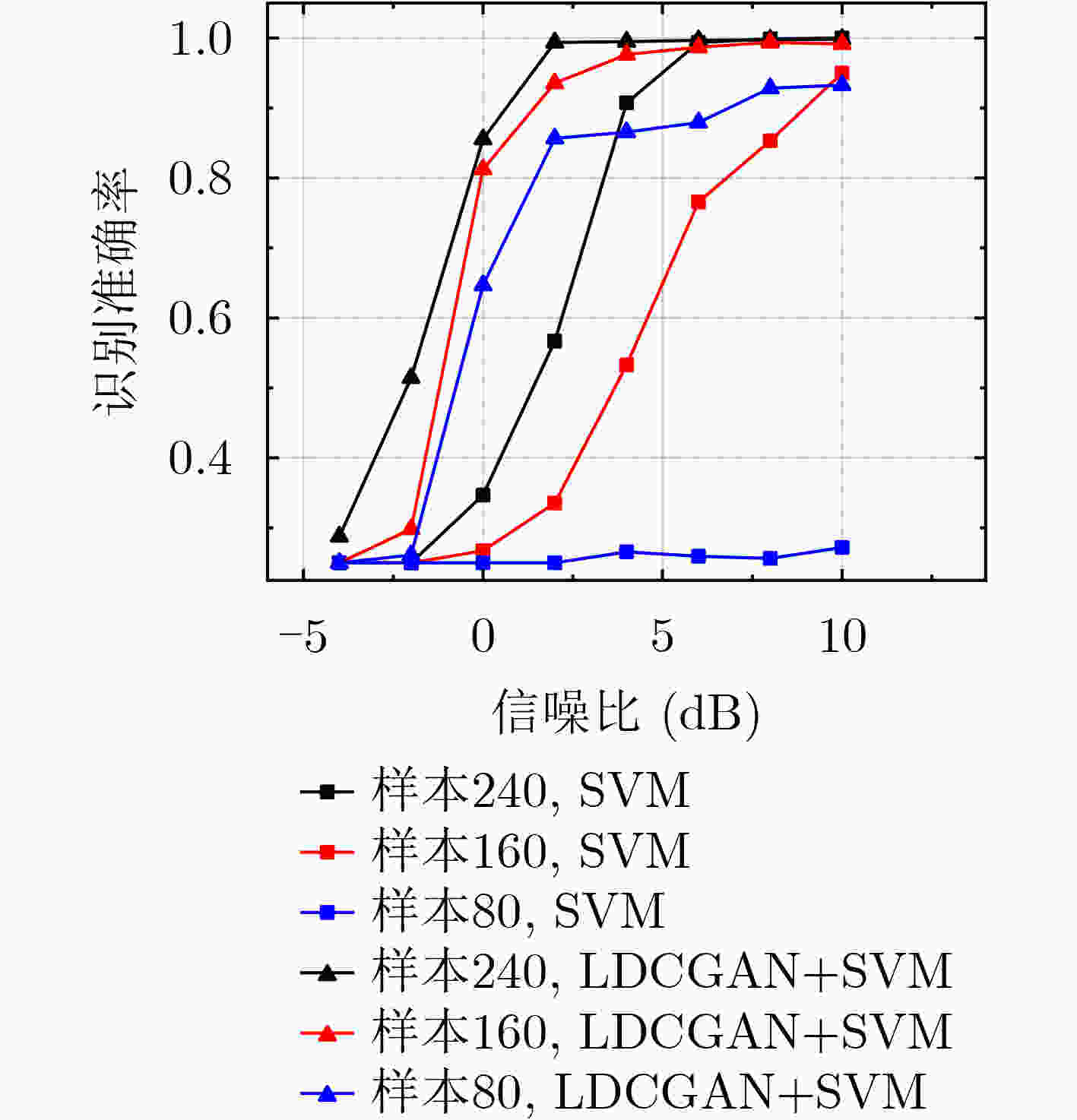


 下载:
下载:
